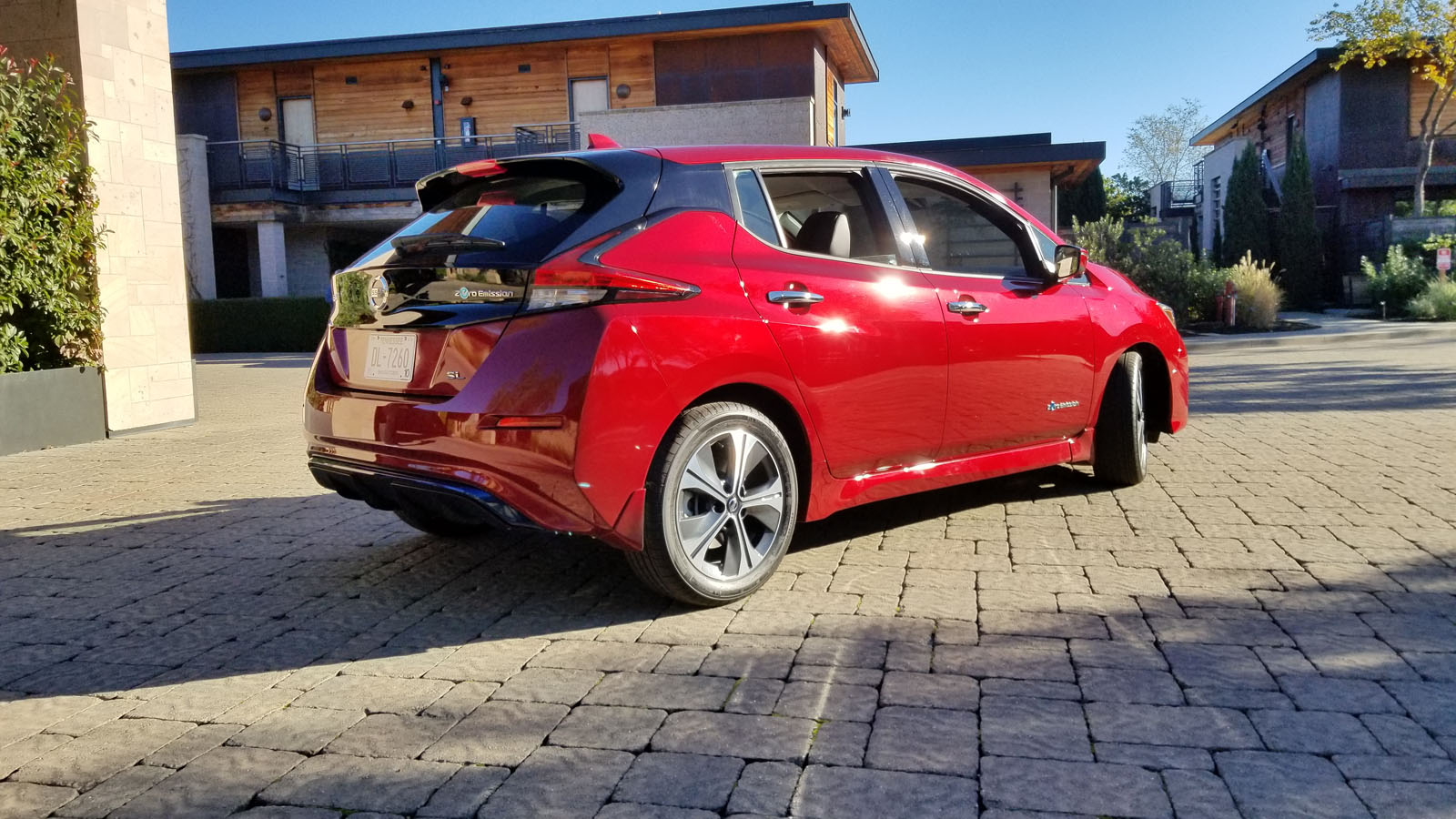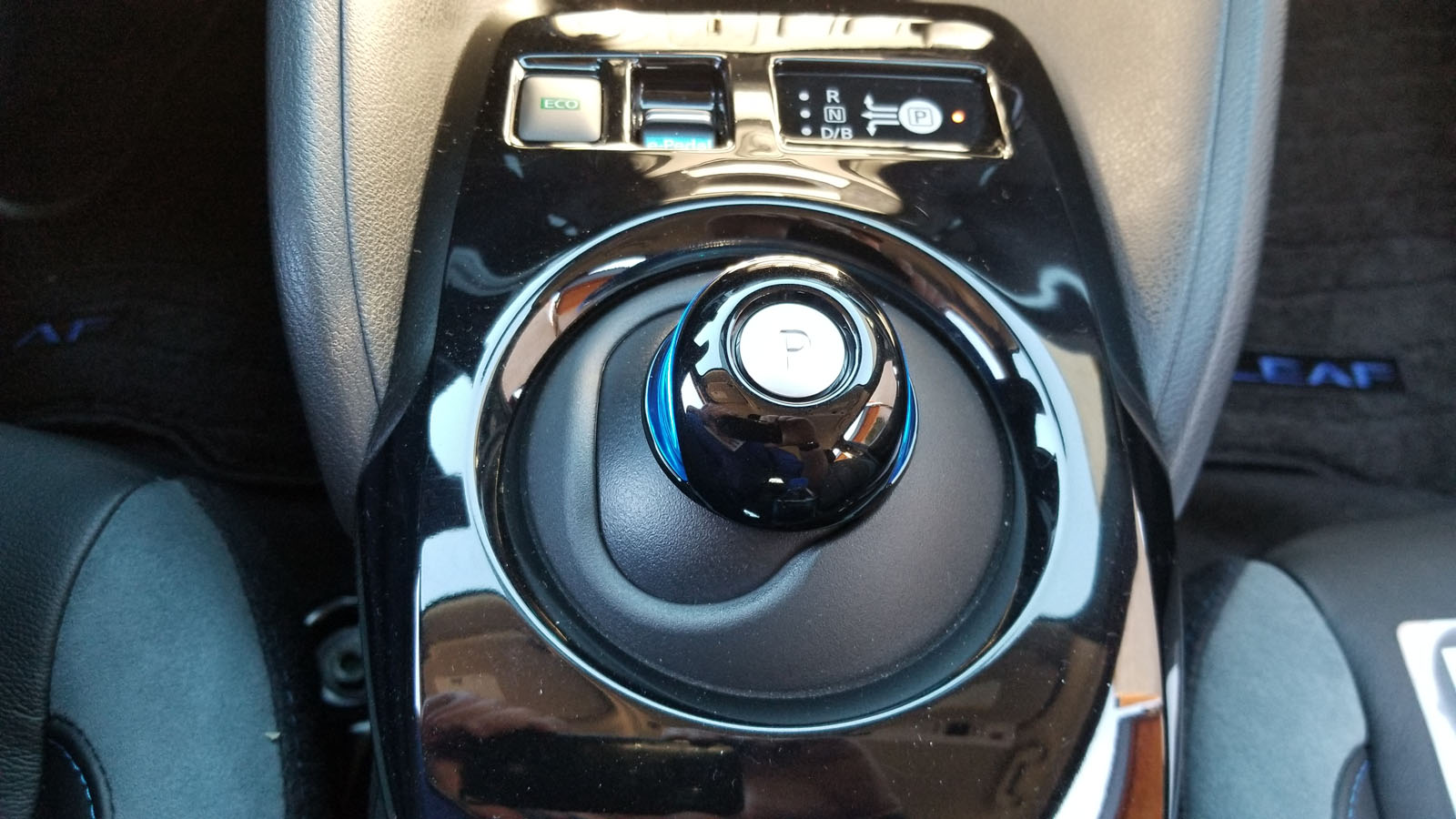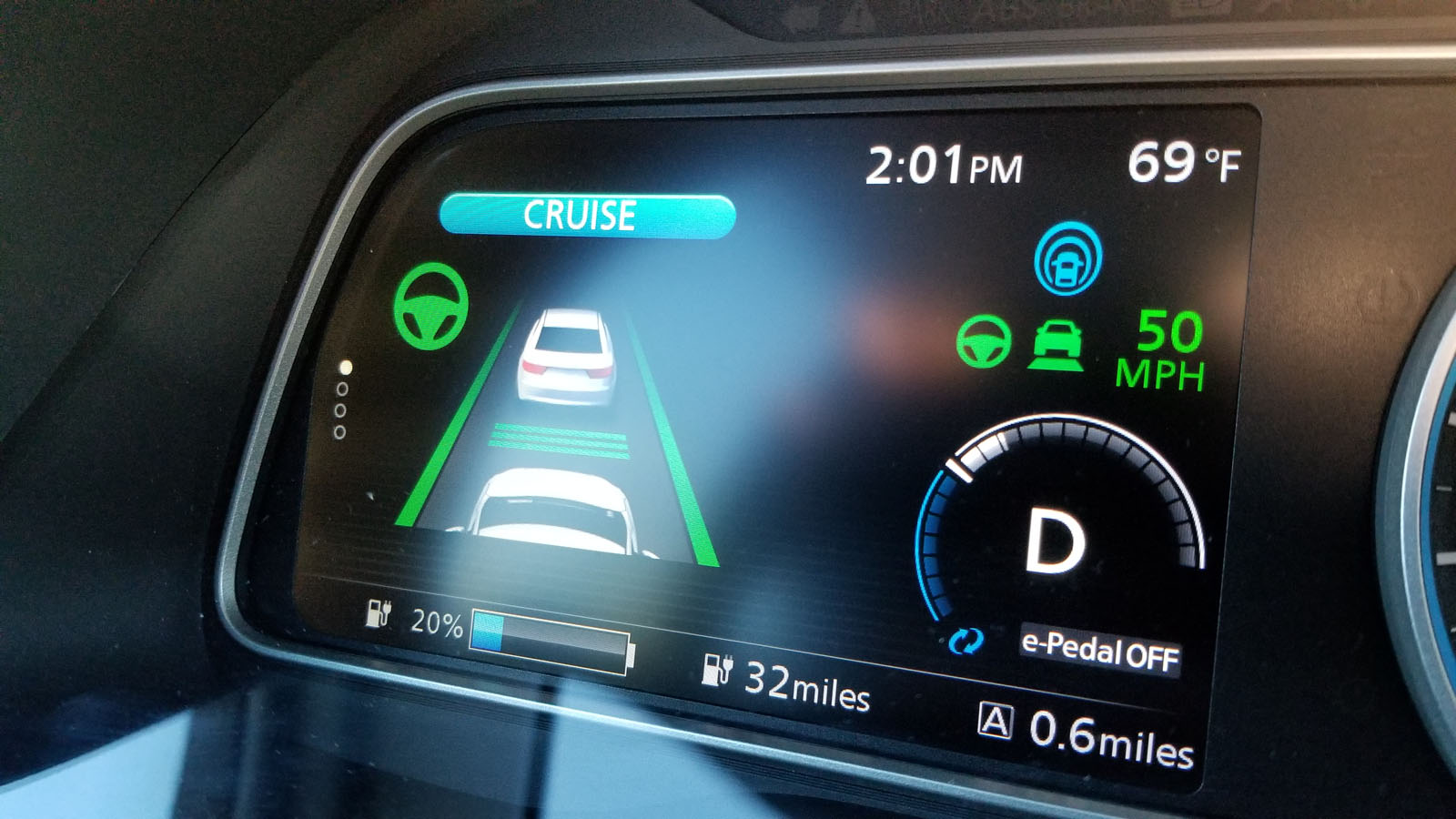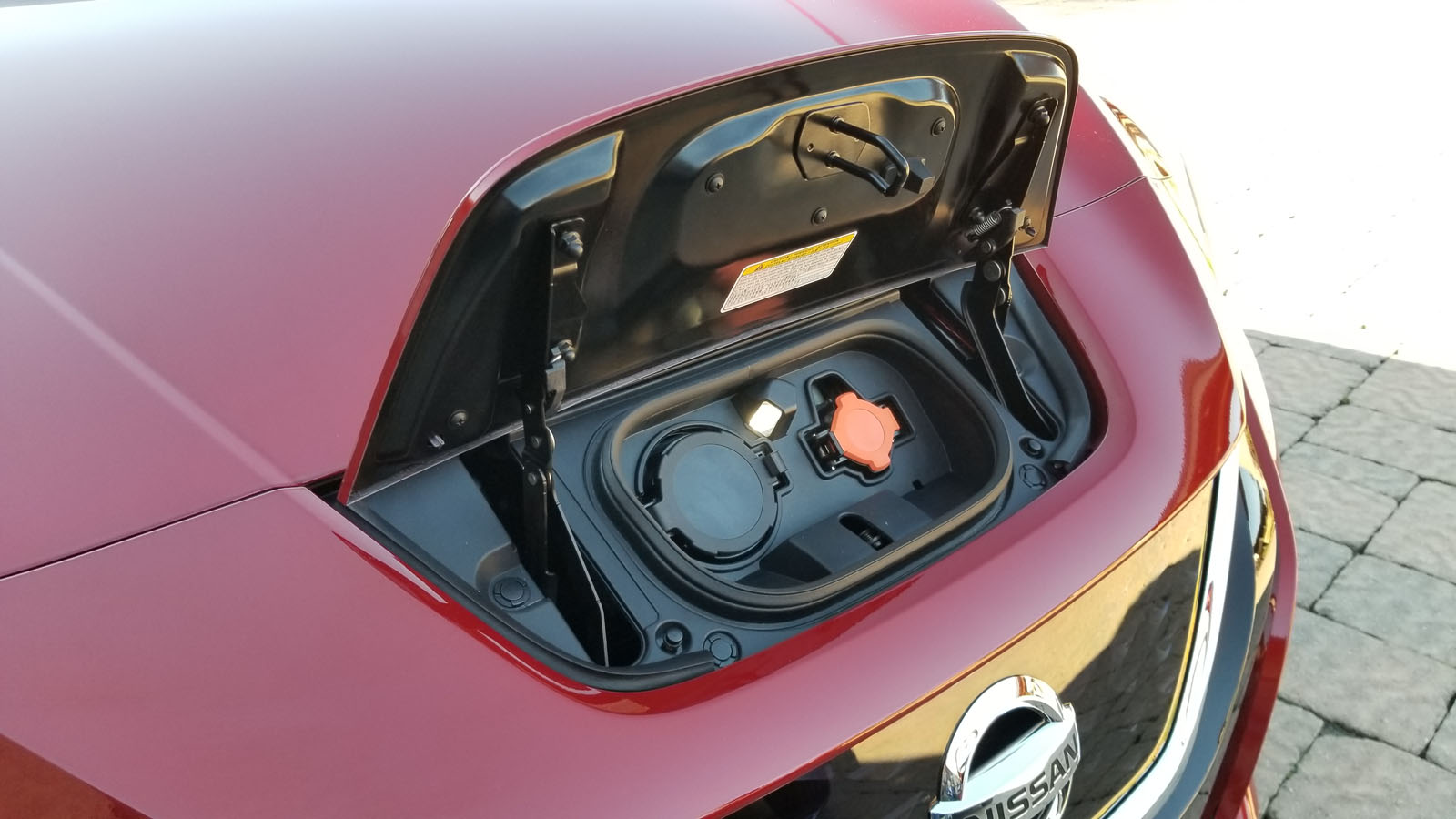When the original Nissan Leaf debuted eight years ago, it was hailed as the affordable electric vehicle. At the time, its range was low, but as one of the first mass-market EVs, it quickly grew a cult-like following for its technology and spaceship looks.
Today, the EV competition is fierce with big names like Tesla trying to get into the affordable electric vehicle category. Nissan’s new Leaf has a lot to live up to. It has to appeal to current fans who adore it, but also go head-to-head with some stiff competition and attempt to draw in more mainstream customers. It’s not an easy task.
While the 2018 Nissan Leaf technically shares the same platform as the old car, it feels all new. It has an upgraded 110-kW electric motor and a 40-kWh lithium-ion battery pack. Nissan claims 150 miles (241 km) of range with this version.
Thanks to the upgraded drivetrain, the new Leaf makes 147 horsepower and 236 lb-ft of torque. Those are small diesel engine numbers, but the instant torque delivery of an electric motor makes the Leaf feel faster.
On paper, it sounds like a solid package, competitive with vehicles like the Hyundai Ioniq but coming up short on range compared to the Chevrolet Bolt EV.
Driving Impressions
Driving around the hills of Napa, California, the 2018 Nissan Leaf feels and drives like a normal car. Steering is light, the cabin is relatively quiet and the ride is smooth over most of the unimproved roads leading up to the big vineyards.
ALSO SEE: 2018 BMW i3s Review and First Drive
Off-the-line acceleration is quick. If you press the accelerator to the floor from a dead stop, the traction control will intervene to keep wheelspin in check. Around town, the Leaf feels quicker than it is.
It’ll happily accelerate to highway speeds without too much fuss and cruise along at 70 mph (113 km/h) like any other family hatchback. All of this is to say that the Leaf behaves and acts like a normal car until you want to play around with some of the cool EV features.
If you talk to anyone who owns an electric car for a while, they’ll eventually bring up one-foot driving. The idea is that instead of using the friction brakes to stop the car, the driver lets the regenerative braking system stop the car. In that scenario, no energy is lost to heat.
On the new Leaf, a technology called e-Pedal makes it simple. After activating e-Pedal with a button on the center console, if you lift your foot off the accelerator pedal, the car will slow down at a speed of up to 0.2g of braking force. But instead of that energy being lost to the brakes, it’s captured and returned to the battery.
ALSO SEE: 5 Unexpected Things That Happen When You Autocross a Chevrolet Bolt EV
In practice, it feels a lot like engine braking in a manual transmission car. It’s surprisingly intuitive and isn’t as jarring as it is on other cars. With a little bit of practice, you’ll be confidently stopping right at the stop line at a traffic light every time without ever putting your foot on the brake.
It’s no sports car, but the driving dynamics feel better sorted than the some of the competition. Great care was put into the car to make it feel like a normal car and not just a battery pack with wheels.
The rear seats have enough room for adults to sit in the back comfortably on trips around town, though some of the taller folks may hit their head getting in and out. Being a hatchback, cargo capacity is an ample 30 cu-ft of with the rear seats folded.
High Tech EV
Setting the Leaf apart from the Bolt EV is ProPilot Assist. This SAE Level 2 semi-autonomous driving technology uses an array of sensors to help you on the commute. It keeps you within the lane on the highway. It slows to a stop and starts again when a car in front of you does. It helps reduce some of the stress that comes with driving.
It’s a hands-on system, meaning that you must keep your hands on the steering wheel for the system to work. Ultimately, the driver must pay attention. If the driver doesn’t pay attention, falls asleep, or is other incapacitated, the system will turn on the hazard indicators and bring the car to a stop.
ProPilot Assist is available as part of the technology package on the SV trim and a standalone additional option on the top-trim SL model.
One other piece of value added to the SL trim is in the charging cable. All Leafs come with a Level 1 charging cable that plugs into any wall outlet. The cable that comes with the SL includes support for Level 2 charging.
That means if you have a dryer plug already installed in your home, you can plug right into that and charge at Level 2 rates. In the United States, a high-speed charger installed in your home can cost an additional $600 or more. That is unnecessary with the SL trim’s charge cable.
Additional niceties support for both Android Auto and Apple CarPlay, and a new mobile phone app that lets you control the car and Amazon Alexa integration.
What About the Chevy Bolt?
The biggest downside compared to the Bolt EV is the range. The Bolt’s 238 miles of range is significantly more than the Leaf in its current form. While the majority of people don’t commute more than the range of Leaf, in a direct comparison people might gravitate to the higher range.
A longer-range version of the Leaf is coming in 2019 for those who need over 200 miles of driving per charge, but Nissan is quick to point out that that vehicle will be more expensive.
How much more? Nissan won’t say, but they plan on being competitive with the Bolt EV on pricing. The base Leaf S starts at $29,990 (excluding $885 destination), whereas the base Bolt EV starts at $37,495 USD. That’s not a small amount of money.
If you sit down and honestly assess how much you drive during a given day or week and the Leaf’s range fits into that target, you can save a lot of money by not waiting for the higher range version.
Additional money savings over the Bolt EV also comes with Nissan’s No Charge to Charge program. For over four years, Nissan has been investing in infrastructure for EV charging and makes access to those charging points free for Leaf drivers who need to top off. No Charge to Charge isn’t limited to California, either. Any buyer can access a charge station virtually anywhere in the country.
The Verdict: 2018 Nissan Leaf Review
Overall, there is significant value in the Leaf package combined with a nice driving experience and the practicality of a normal car. All of those are big wins in the competitive electric vehicle space. While the range may give you some pause, it’ll meet most buyers’ needs and it might even surprise you.
Discuss this article on our Nissan Forum












